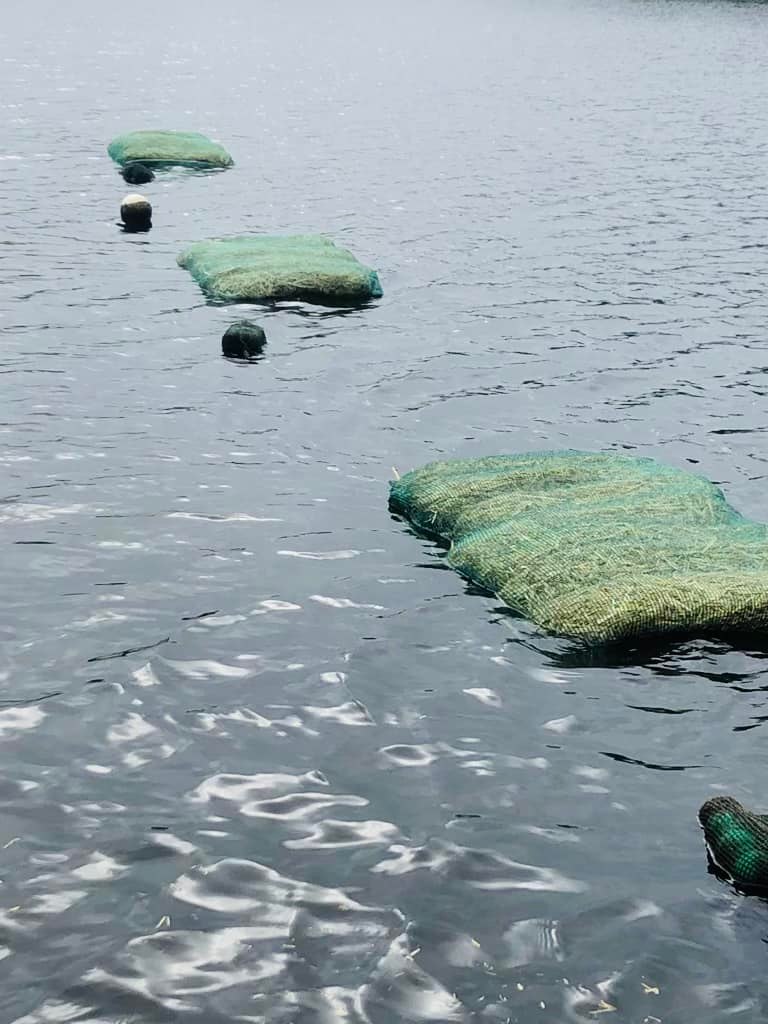In the United Kingdom, managing algal blooms in commercial reservoirs is a critical environmental issue. Algae, while a natural part of aquatic ecosystems, can become problematic when they grow excessively due to conditions like stagnant water, high temperatures, and an abundance of nutrients. Such blooms disrupt the ecological balance and degrade water quality, leading to issues such as oxygen depletion, the death of aquatic life, and water that is unfit for consumption. At William Gilder Group, we specialize in a particularly sustainable method of controlling these blooms—using barley straw—an environmentally friendly solution that has proven effective across various water bodies in the UK.
Understanding Algal Blooms
Algal blooms are often triggered by a combination of factors including stagnant water, elevated temperatures, and especially high levels of nutrients such as nitrogen and phosphorus. These nutrients frequently enter water systems through agricultural runoff, untreated wastewater, and industrial discharges. The types of algae that typically affect UK reservoirs include:
- Planktonic Algae: Microscopic and single-celled, these algae can freely float or form colonies, impacting the water’s color and quality.
- Filamentous Algae: These algae form long, hair-like mats that can float to the surface and are often visible as green scum.
- Blue-Green Algae (Cyanobacteria): These bacteria function like algae and can create large, harmful blooms that produce toxins detrimental to both aquatic life and humans.
The Role of Barley Straw in Algae Management
At William Gilder Group, we champion the use of barley straw as the optimal solution for controlling algae sustainably in commercial reservoirs. This method is not only effective but also eco-friendly, aligning with our commitment to environmental stewardship.
- How Barley Straw Works: When barley straw decomposes in water, it releases natural chemicals that inhibit the growth of new algae without harming the existing aquatic ecosystem. The decomposition process slowly releases hydrogen peroxide in low levels, a byproduct that is effective in controlling algae growth.
- Application of Barley Straw: The straw must be applied to the water body before the algal growth starts, typically in early spring. It is placed in mesh bags to ensure even decomposition and prevent any blockage of water flows. The positioning of the straw near the water surface is crucial as it ensures exposure to oxygen, which aids the decomposition process.
- Advantages of Barley Straw:
- Environmentally Sustainable: Unlike chemical treatments that can leave harmful residues and impact non-target species, barley straw is a natural product that decomposes without trace, except for the benign ecological impact of reduced algae.
- Cost-Effective: Barley straw is a relatively inexpensive material, especially when compared to ongoing chemical treatments or advanced technological interventions.
- Long-Term Efficacy: Regularly replenished, barley straw provides a long-term solution to algae management, helping to maintain ecological balance and water quality.
Implementation Strategy
Implementing barley straw for algae control requires careful planning and execution:
- Assessment: Prior to application, it’s essential to assess the specific conditions of the reservoir, including size, water flow patterns, and existing nutrient levels.
- Strategic Placement: Barley straw should be strategically placed where water flow can aid in the even distribution of decomposing materials.
- Monitoring and Maintenance: Regular monitoring of water quality and algal growth patterns is crucial to adapt the strategy as needed. Barley straw typically needs to be replaced every six months to maintain its efficacy.
Broader Environmental Management
While barley straw is an effective method for controlling algae, it is most successful when combined with broader environmental management strategies such as reducing nutrient runoff through buffer zones, improving wastewater treatment, and educating the public and industries on practices that minimize environmental impact.
Conclusion
Controlling algae growth in commercial reservoirs is essential for preserving water quality and protecting aquatic ecosystems. By utilizing barley straw, William Gilder Group promotes an environmentally sustainable, effective, and economically feasible method to manage algal blooms. This natural approach not only aligns with our environmental ethos but also supports the health of the UK’s aquatic environments for future generations. For more detailed information on implementing barley straw in your water management practices, visit our Waterway Management page.







